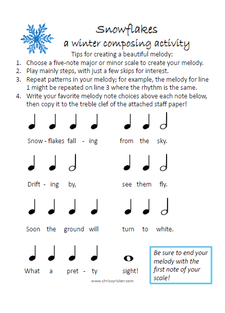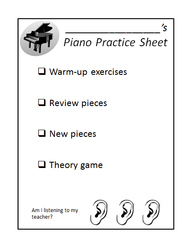
Today I am sharing a new guided composition activity with a winter theme! Guided compositions are a great way to gently introduce the idea of composition to your students, since they provide students with parameters that make the composition process easier.
This guided activity, "Snowflakes," provides students with tips for creating a pleasing melody to match the given rhythm. Once students have created their melody, they can write in on the staff and choose harmony notes to add to the bass clef. Students can finish their composition by adding dynamics and creating a coda using the melody notes from the first measure of their piece.
Click on the picture above to download the "Snowflakes" composing activity! My other guided composition activities can be found HERE, HERE, and HERE. What do you think? Do you have any tips for introducing students to composing? Please share in the comments!



 RSS Feed
RSS Feed